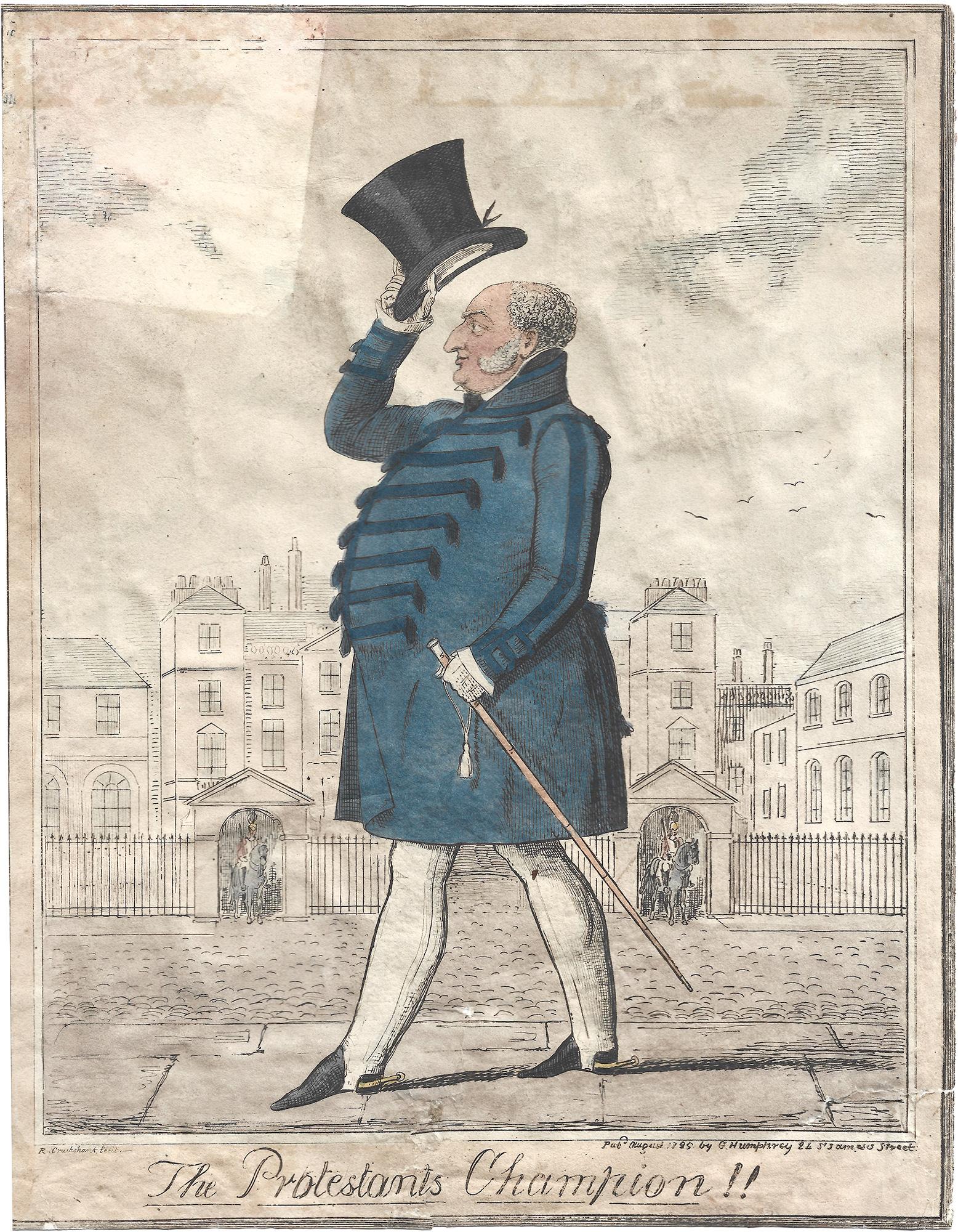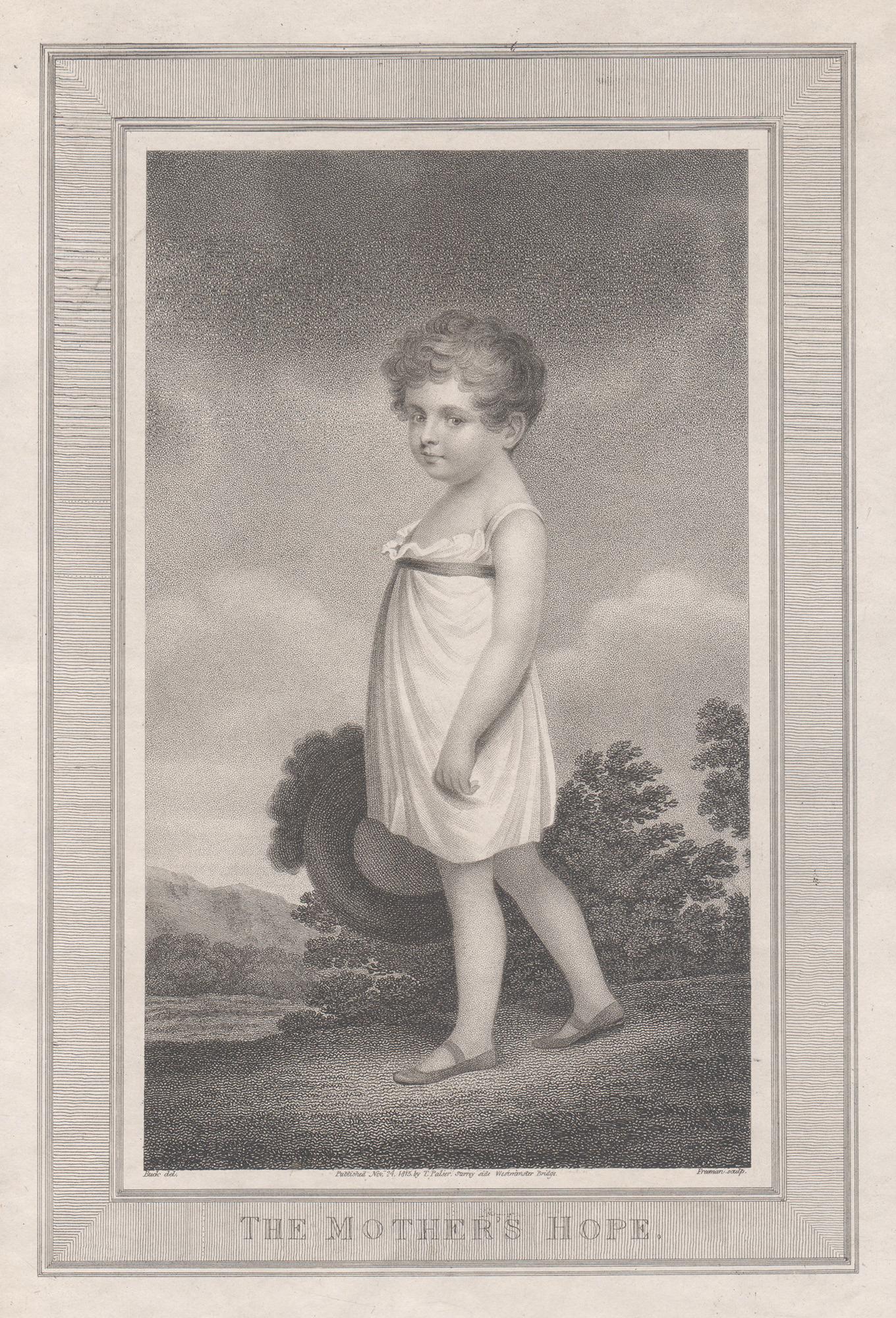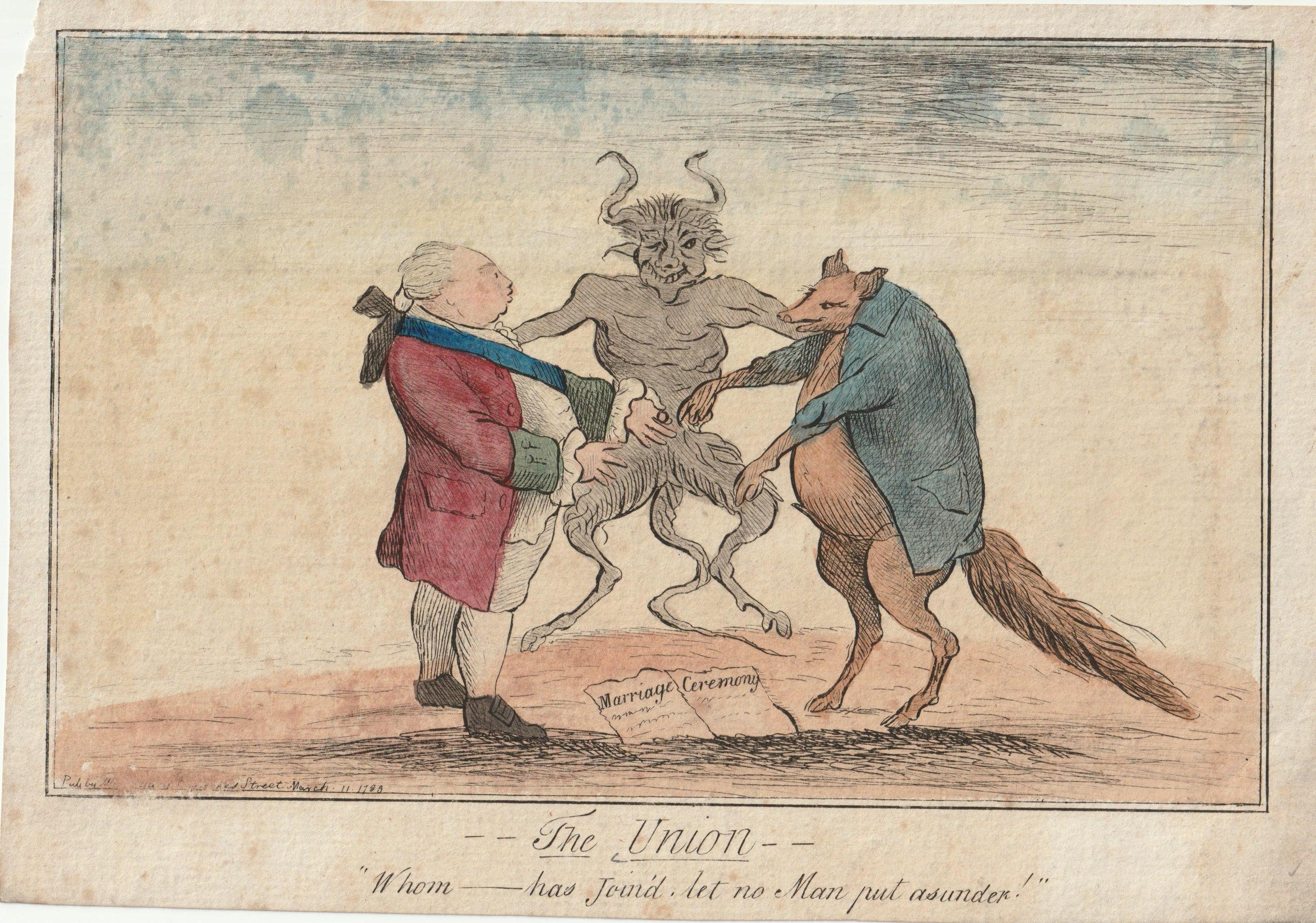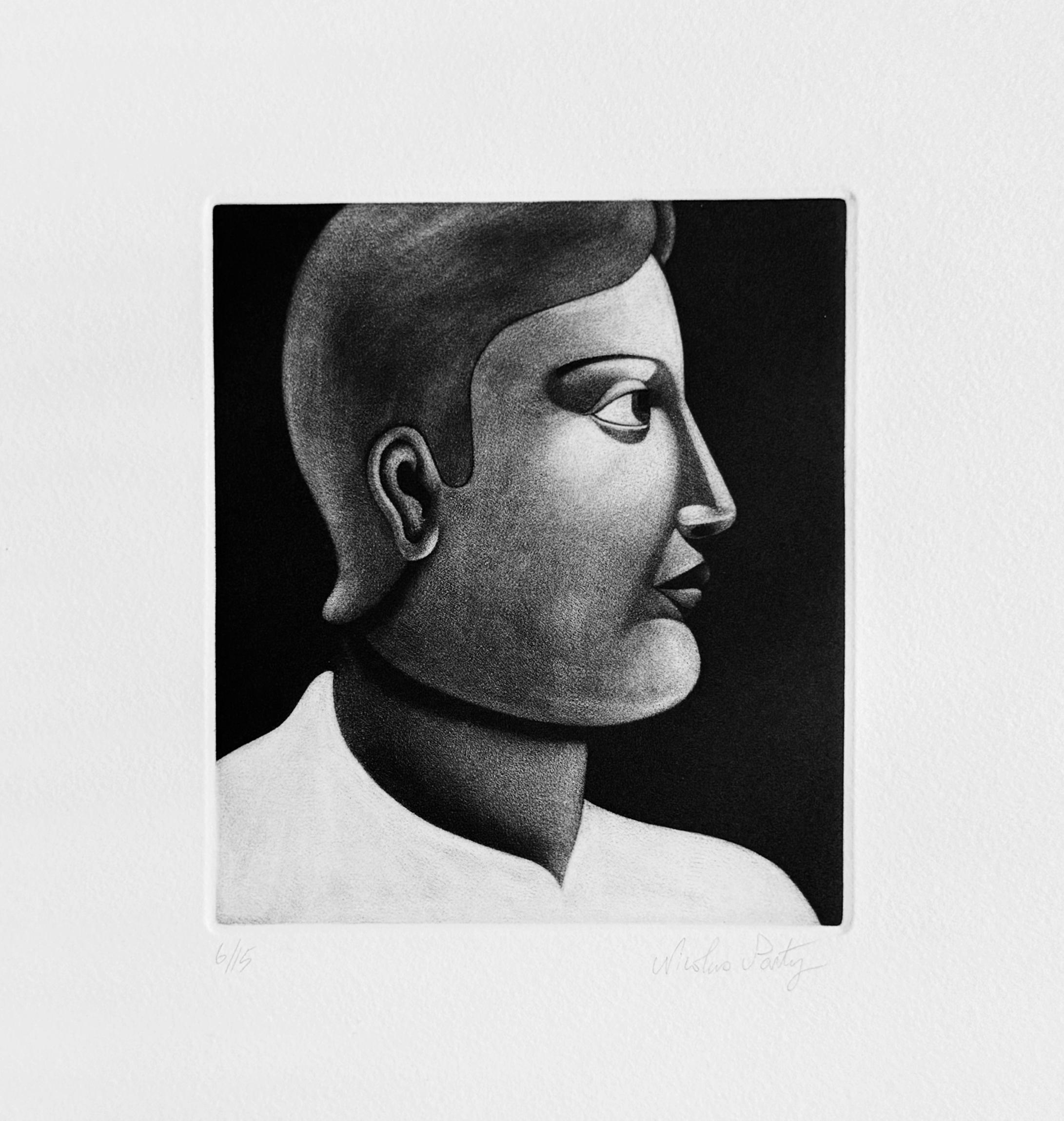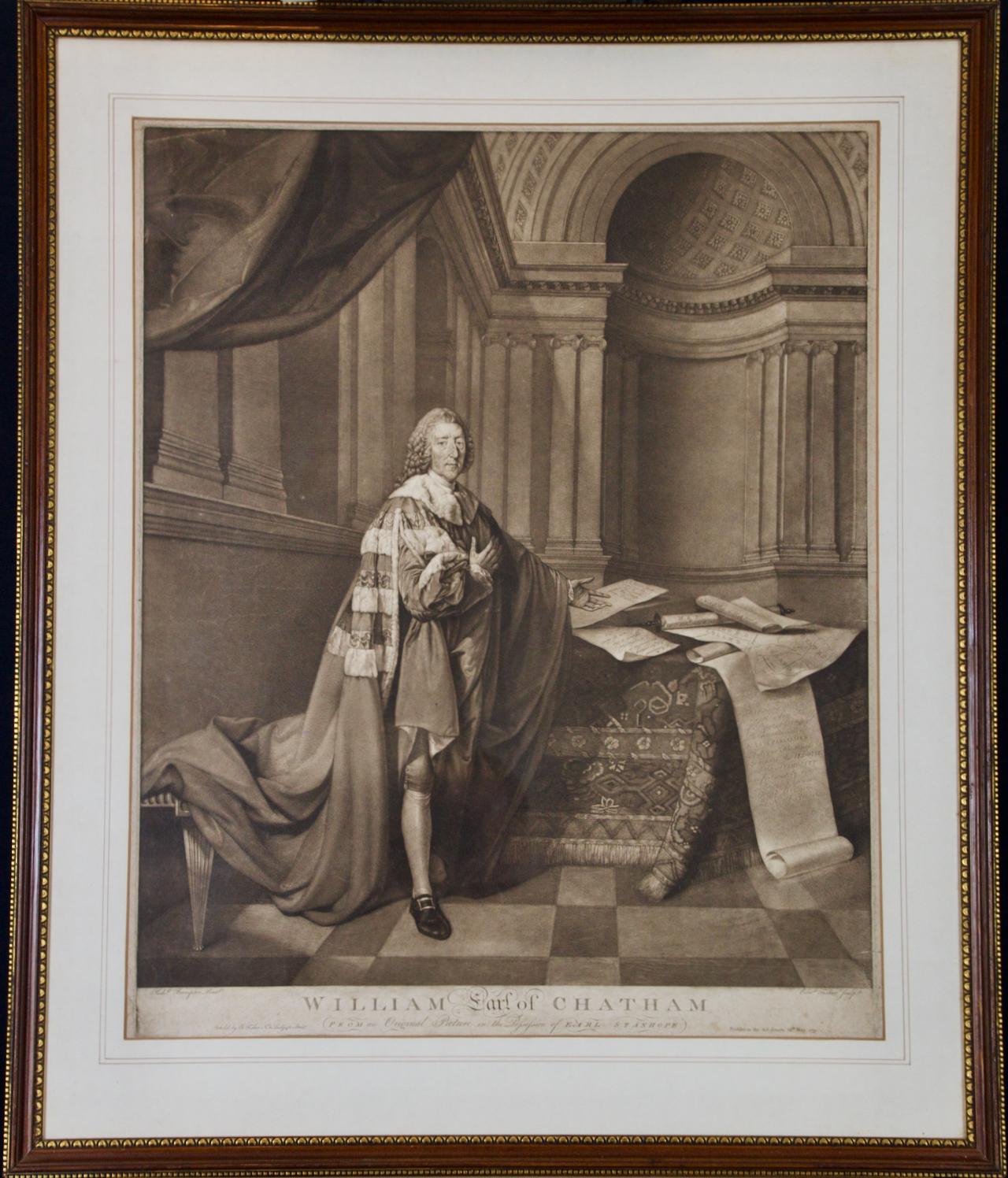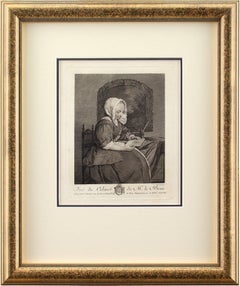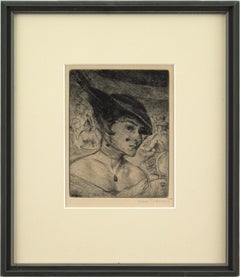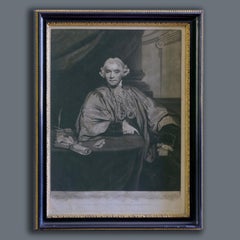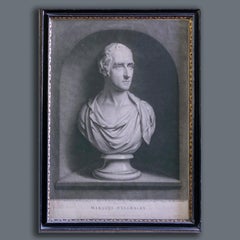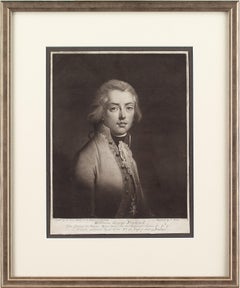
18th-Century Engraving, William George Frederick, Prince of Orange-Nassau
View Similar Items
Want more images or videos?
Request additional images or videos from the seller
1 of 12
Unknown18th-Century Engraving, William George Frederick, Prince of Orange-Nassauc. 1797
c. 1797
About the Item
- Creation Year:c. 1797
- Dimensions:Height: 17.5 in (44.45 cm)Width: 14.5 in (36.83 cm)
- Medium:
- Movement & Style:
- Period:
- Condition:Artwork presents well.
- Gallery Location:Cheltenham, GB
- Reference Number:1stDibs: LU2328211644762
About the Seller
5.0
Platinum Seller
These expertly vetted sellers are 1stDibs' most experienced sellers and are rated highest by our customers.
Established in 2017
1stDibs seller since 2023
117 sales on 1stDibs
More From This SellerView All
- Jacques-Philippe Le Bas After Gerard Metsu, Portrait Of A Lady, EtchingBy Jacques-Philippe Le BasLocated in Cheltenham, GBThis exquisite 18th-century engraving by Jacques-Philippe Le Bas (1707-1783) is after a portrait by Dutch artist Gerard Metsu (1629-1667). It formed part of Jean Baptiste Pierre Le Brun’s 'Galerie des Peintres Flamands, Hollandais et Allemands; Ouvrage enrichi de Deux Cent Planches graves d'apres les meilleurs Tableaux de ces Maitres'. Jean Baptiste Pierre Le Brun is considered one of the most influential art dealers in European history. His publication, Galerie des Peintres Flamands etc, illuminated the darkened corners of Dutch and Flemish art while also building acclaim for known luminaries, such as Gerard Metsu. Via the ‘Galerie’, Le Brun mentions Vermeer for the first time and sets the great Dutch master on a path to notoriety. He also unearthed several of Rembrandt’s followers, such as Ferdinand Bol...Category
18th Century Old Masters Portrait Prints
MaterialsPaper, Etching
- Axel Wallert, Fashionable Lady With Feathered Hat, EtchingLocated in Cheltenham, GBThis stylish early 20th-century etching by Swedish artist Axel Wallert (1890-1962) depicts a young lady wearing an extraordinary hat. She’s attending a busy function and dressed to impress in the fashion-a-la-mode. It’s tricky to decipher exactly how the hat is constructed but it’s probably feathered. It’s reminiscent of Edwardian bird hats...Category
Early 20th Century Impressionist Portrait Prints
MaterialsPaper, Etching
- 18th-Century Engraving, Ancient English DressesLocated in Cheltenham, GBThis late 18th-century engraving from Thomas Bankes’ ‘New and Authentic System of Universal Geography’ depicts the evolution of ladies' fashion between 1590 and 1630. In this unusua...Category
18th Century English School Figurative Prints
MaterialsPaper, Engraving
- Walter Hancock’s Enterprise Steam Omnibus, 19th-Century Hand-Coloured LithographLocated in Cheltenham, GBThis charming mid-19th-century hand-coloured lithograph depicts the ‘Enterprise Steam Omnibus’, the most successful steam carriage of its period. In the early 19th century, long-distance travel was predominantly undertaken by horse-drawn carriages. Yet, every so often, the clitter-clatter of hooves was abruptly overshadowed by the whir of steam-powered technology. From around 1801, several plucky inventors began developing carriages which could propel themselves via steam. The majority were notoriously unreliable, often breaking down, too slow to be practical, and occasionally exploding. The first steam-powered carriage, invented by Richard Trevithick of Cornwall, made its debut in 1801. It was known as ‘The Puffing Devil’ or ‘Captain Dick’s Puffer’ and said to cause quite a fright when trundling towards you. But this, like several others, couldn’t sustain the rigours of regular long distance trips, which were required to support the cost of running them. Walter Hancock’s (1799-1852) carriages were different. They became the first to run regularly - initially from Stratford and London via the ‘Infant’, a ten-seater bus, and in 1833, between London Wall and Paddington via ‘The Enterprise’, which we see here. Hancock’s machines were revolutionary due to his patented steam boiler (which had less risk of exploding). The Enterprise also had a pioneering suspended engine along with several other clever additions. Driving it was a tricky affair with three operators required - one to steer and control the speed, a second to monitor the boiler’s water level, and a third to maintain the fire. It’s unclear how the three communicated over the omnipresent din. In total, Hancock’s machines carried 12,761 passengers across 4,200 miles, an incredible achievement given the constraints of the day and the condition of the roads. The Enterprise was lauded in Europe and the US, with this particular image featuring in the New York press. The lithograph is based upon an earlier engraving...Category
Mid-19th Century English School More Prints
MaterialsPaper, Lithograph
- 19th-Century Fashion Advertising, Our Styles For The Present Season, LithographLocated in Cheltenham, GBThis charming late 19th-century lithograph was produced by Freudenthal & Co for clothing manufacturers, TJ Thomas & Ellis Jones, to showcase the latest fashion. There are 17 styles including the DB Gladstone (after the Prime Minister), Ulster, Demi Sac, Tourist Blouse, Frock Coat and D B Prince Alfred. There’s also a Riding Habit for the lady. TJ Thomas & Ellis Jones were based at 138 Queen Victoria Street...Category
19th Century English School Figurative Prints
MaterialsPaper, Lithograph
- James Stephanoff, Portrait Of Miss Smernove, Oil PaintingBy James StephanoffLocated in Cheltenham, GBThis charming portrait of Miss Smernove by British artist, James Stephanoff (1784-1874) is rendered with a masterful touch. It depicts the confident young lady wearing a white high-w...Category
Early 19th Century English School Portrait Drawings and Watercolors
MaterialsPaper, Watercolor
You May Also Like
- The Gamesters. The Fortune Teller.Located in New York, NYTHE GAMESTERS and THE FORTUNE TELLER. A wonderful pair of color printed mezzotint engravings after paintings by the Rev. Matthew William Peters, R....Category
Late 18th Century English School Portrait Prints
MaterialsMezzotint
- After Sir Joshua Reynolds, 18th Century Mezzotint Portrait of John Hely-HutchinsLocated in London, GBA scarce mezzotint engraved by James Watson published in May,1778. Proof before title; the image has maintained is rich dark tonality. John Hely-Hutchinson (1724-1794) was a politician, lawyer and Provost of Trinity College, Dublin. Born in Gortroe, County Cork in 1724, he graduated from Trinity College in 1744, and swiftly built up a good practice at the Bar. From 1760 until his death he represented Cork in Parliament. Promotion to the post of Prime Serjeant followed in 1761 and on most issues he supported the Government, and acquired several lucrative offices. His appointment as Provost of Trinity as a married layman who had not been a Fellow was a continued source of friction as the Fellows resented the imposition of what they perceived as a career politician with no pretensions to scholarship. He was sympathetic to Catholic Emancipation...Category
18th Century English School Portrait Prints
MaterialsMezzotint
- After A Bust by J. Nollekins, 19th Century Mezzotint of The Marquess WellesleyLocated in London, GBMezzotint engraved by John Young, January 1820, from a drawing by George Antoine Kernan. Richard Colley Wesley, later Wellesley, 1st Marquess Wellesley (20 June 1760 – 26 September ...Category
Early 19th Century English School Portrait Prints
MaterialsMezzotint
- 'The Protestants Champion!!' (... Duke of Sussex, Son of King George III)By George CruikshankLocated in Middletown, NYThis portrait of King George the III's son was published in the same year that Beethoven's Ninth Symphony premiered in London. 'The Protestants Champion!!' (Prince Augustus Frederick, Duke of Sussex...Category
Early 19th Century English School Portrait Prints
MaterialsWatercolor, Handmade Paper, Engraving, Etching
- Thomas Hearne, artist, portrait, soft ground etching, 1809Located in Melbourne, Victoria'Thomas Hearne' Soft ground etching by William Daniell RA (1769-1837) after George Dance the Younger (1741-1825), 1809. Thomas Hearne (1744-1817...Category
Early 1800s English School Portrait Prints
MaterialsEtching, Engraving
- Benjamin West, history painter, portrait, soft ground etching, 1809Located in Melbourne, Victoria'Benj. West RA' Soft ground etching by William Daniell RA (1769-1837) after George Dance the Younger (1741-1825), 1809. Benjamin West PRA (1738 – 1820) was an Anglo-American painter of historical scenes around and after the time of the American War of Independence...Category
Early 18th Century English School Portrait Prints
MaterialsEngraving, Etching
Recently Viewed
View AllMore Ways To Browse
Antique Prince
Lace Print
Printed Lace
Cost Of Selling
English General
18th Century French Engraving
18th Century Engraving Framed
King Prince
18th C Engravings
Prince George
Dutch Orange
French Portraits 18th
Set Of Prints 18th Century
18th Century French Portraits
18th Century Mens
French School 18th Century
18th Century Engraving Set
William And Mary English



